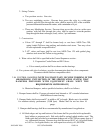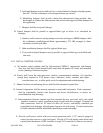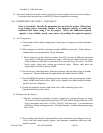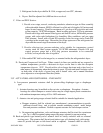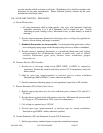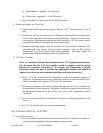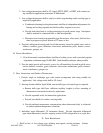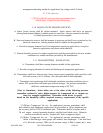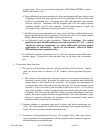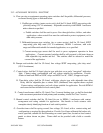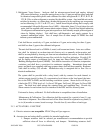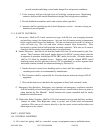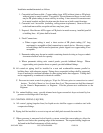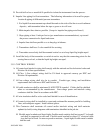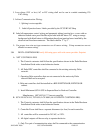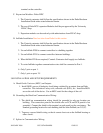JANUARY 2008 UCCS STANDARDS 15950-26
response time. Zero and span shall be adjustable. KELE Model PTXIE, or equal.
Install with isolation valve.
4. Water differential pressure transmitters for flow measurement shall have stainless steel
diaphragm construction, proof-pressure of 150 psi minimum, and the accuracy shall
be 0.25% of calibrated span. Overrange limit (⊗P) and maximum static pressure
shall be 3,000 psi. Transmitter shall be complete with 4-20 mA output, required
mounting brackets, and five-valve manifold. Provide quick-connects on high- and
low-pressure lines. Mount in a location accessible for service.
5. All differential pressure transmitters for water service shall have a differential pressure
gauges mounted at the point of application. Provide tees with ½” size, quick-connect
fittings (Hanson fittings) on the high- and low-pressure lines.
6. Air differential static pressure transmitters: [Note to Consultant: For critical
applications where the differential pressure can drop below 0.2" W.C. - such as
outside-air flowrate monitoring, or critical differential pressure control
applications in laboratories - specify an Air-Monitor, Veltron II Model,
differential-pressure transmitter only.]
7. All differential pressure transmitters for air shall have panel-mounted differential
pressure gauges. Provide tees with removable caps on the high- and low-pressure
lines.
C. Transmitter Span Selection:
1. The span of each transmitter must be carefully selected by the Contractor. Typical
spans are shown above in Section 2.11 B. General selection procedures are given
below.
2. The selection of the appropriate transmitter span is a crucial step in the design of a
functional control system. In general, the span of the transmitter should match the
normal ranges of the variable to be controlled. For example, the measurement of
system pressure where the normal operating pressure is 20 psi and the peak system
pressure is 35 psi, the correct span selection would be 0 to 50 psi. A 0 to 100 psi
span, while workable, would be operating in the lower third of the span under normal
conditions. This decreases the controller’s ability to detect small changes in pressure.
Ideally, the control setpoint should be at approximately 75% of the transmitter’s span.
However, expected maximum and minimum values encountered during normal
operation of the system must be accounted for.
3. Particular attention to transmitter span must be taken with airflow monitoring sta-
tions. The recommendations of the airflow-monitoring station supplier must be fol-
lowed. Be sure to include an altitude correction factor.
4. Transmitters found operating in the lower 33% or upper 20% of their span, during
normal conditions of system operation, shall be replaced, at the Contractor’s expense,
with units having an acceptable span.



